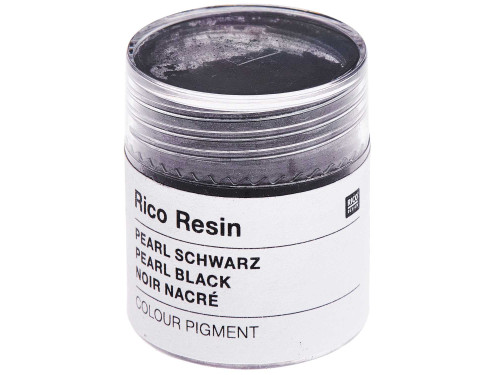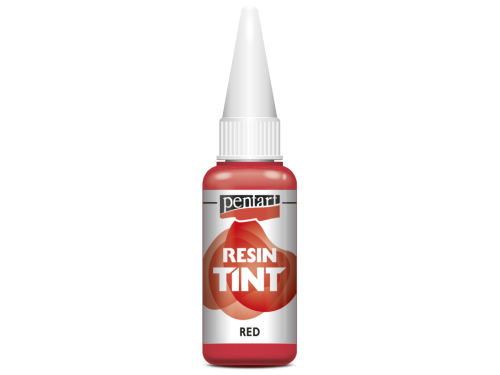Epoxide resins are synthetic polymer materials that, after hardening, become resistant to dissolving and melting. The name "epoxy" comes from the name of the chemical group. Epoxies were patented in 1934 by Paul Schlack and Pierre Castan. Epoxy resin is widely used in various fields - construction, engineering, wood, aviation and space industries, as well as in the production of furniture, ships and yachts. Epoxy resin can also be used for the production of paints and laminates, but also paintings, dishes and unique jewelry - earrings, bracelets, pendants or rings. It will also be useful in modeling.
Works made of epoxide resin are extremely durable and resistant to damage. The resin creates a smooth and uniform layer on the covered surfaces, which protects the object against damage. What are the types of epoxy resin? There are different types of resins on the market. Most often they are two-component resins - the sets consist of a liquid component and a hardener, which must be mixed with each other in the proportions specified by the manufacturer. It should be remembered that the precise measurement of ingredients may determine whether the product will be successful - that is why precision and accuracy in this matter are so important. The second type are one-component resins that are ready to use and do not need to be mixed with any other component.
Epoxy resin is usually colorless and resembles glass when dry. The transparent resin can, however, be colored freely, using pigments and dyes dedicated to epoxide resins. Then you can get any effect, depending on the amount and type of dye added - from fully opaque, which will be particularly helpful, for example, when painting pictures, to semi-transparent, which will be perfect, for example, in the production of jewelry, furniture, etc.
Dyes and pigments for epoxy resin can be in liquid, powder or paste form. Thanks to them, you can give the epoxide resin the desired color. Dyes can be mixed and combined with each other, obtaining interesting effects and interesting new shades. There are both matte and pearl pigments and dyes. Pearl dyes are perfect for products that come into contact with light - they reflect it and sparkle in the sun, which makes them a unique decoration for a home or wardrobe. For different, shiny and interesting effects, Art Mica powder, microspheres or foil in petals, as well as dried flowers and other small items such as coffee beans, sand, shells, decorative beads can be added to the resin.
How to use epoxy resin? The resin can be used in many different ways, but most often it should be thoroughly mixed before use, using a plastic or wooden spatula, and then applied in the desired place. This can be, for example, a silicone mold, a jewelry mold, a bead mold, as well as the flat surface of a painting or furniture. If air bubbles appear on the surface of the resin - you can remove them with a kitchen burner or a lighter by gently heating the surface for a few seconds. Then the resin should be left to dry, the drying time of the epoxy resin is usually from 24 to 72 hours, depending on the manufacturer, type of resin and layer thickness. Epoxy resin can be ground and polished.
Epoxide resins are synthetic polymer materials that, after hardening, become resistant to dissolving and melting. The name "epoxy" comes from the name of the chemical group. Epoxies were patented in 1934 by Paul Schlack and Pierre Castan. Epoxy resin is widely used in various fields - construction, engineering, wood, aviation and space industries, as well as in the production of furniture, ships and yachts. Epoxy resin can also be used for the production of paints and laminates, but also paintings, dishes and unique jewelry - earrings, bracelets, pendants or rings. It will also be useful in modeling.
Works made of epoxide resin are extremely durable and resistant to damage. The resin creates a smooth and uniform layer on the covered surfaces, which protects the object against damage. What are the types of epoxy resin? There are different types of resins on the market. Most often they are two-component resins - the sets consist of a liquid component and a hardener, which must be mixed with each other in the proportions specified by the manufacturer. It should be remembered that the precise measurement of ingredients may determine whether the product will be successful - that is why precision and accuracy in this matter are so important. The second type are one-component resins that are ready to use and do not need to be mixed with any other component.
Epoxy resin is usually colorless and resembles glass when dry. The transparent resin can, however, be colored freely, using pigments and dyes dedicated to epoxide resins. Then you can get any effect, depending on the amount and type of dye added - from fully opaque, which will be particularly helpful, for example, when painting pictures, to semi-transparent, which will be perfect, for example, in the production of jewelry, furniture, etc.
Dyes and pigments for epoxy resin can be in liquid, powder or paste form. Thanks to them, you can give the epoxide resin the desired color. Dyes can be mixed and combined with each other, obtaining interesting effects and interesting new shades. There are both matte and pearl pigments and dyes. Pearl dyes are perfect for products that come into contact with light - they reflect it and sparkle in the sun, which makes them a unique decoration for a home or wardrobe. For different, shiny and interesting effects, Art Mica powder, microspheres or foil in petals, as well as dried flowers and other small items such as coffee beans, sand, shells, decorative beads can be added to the resin.
How to use epoxy resin? The resin can be used in many different ways, but most often it should be thoroughly mixed before use, using a plastic or wooden spatula, and then applied in the desired place. This can be, for example, a silicone mold, a jewelry mold, a bead mold, as well as the flat surface of a painting or furniture. If air bubbles appear on the surface of the resin - you can remove them with a kitchen burner or a lighter by gently heating the surface for a few seconds. Then the resin should be left to dry, the drying time of the epoxy resin is usually from 24 to 72 hours, depending on the manufacturer, type of resin and layer thickness. Epoxy resin can be ground and polished.




































